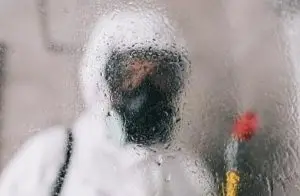OSHA serves to provide guidance and requirements for industry safety practices. This organization’s requirements are designed to protect workers from harmful exposure to fumes, dust, gases, and other airborne contaminants. In order to do so, the OSHA respirator requirements must be met.
What is the OSHA industry standard for respirators?
In the event that respirators are required to safeguard an employee’s health, they must be given to each employee. The employer is responsible for providing the appropriate respirators for the job at hand. This is to protect workers from airborne threats in the workplace during accidents or emergencies.
Respiratory Protection Standard (29 CFR 1910.134 and 29 CFR 1926.110) is in effect and supersedes OSHA’s 1971 respiratory protection regulations.
What are the 4 types of respirators?
In terms of APR facepieces, disposable, quarter, half, and full-face masks are the most frequent. The use of disposable respirators (dust masks) protects the wearer from irritating dust and particles. When using a quarter mask respirator, cartridges or cloth filters may be utilized as filters.
What are the two general types of respirators OSHA?
Air-purifying respirators (APRs) and atmosphere-supply respirators (ASRs) are the two primary forms of respiratory protection (ASRs). Depending on the design of the respirator, each variety gives a different amount of protection.
What is required before using a respirator?
Employees must be medically certified to use a respirator by a physician or other qualified healthcare practitioner before they may be put on a respirator. Employees are needed to fill out a medical questionnaire as part of the medical clearance procedure
What is the minimum requirement before a person can use a respirator?
NIOSH certification is required for respirators. Atmospheres with low relative humidity (IDLH) call for the use of self-contained breathing apparatuses (SCBAs) or self-contained respirators (SARs) with a minimum service life of 30 minutes, or both.
Related Questions and Answers
What disqualifies you from wearing a respirator?
Wearing a respirator may be prohibited if the following conditions apply: When the respirator seals to the face, it must protect even with facial abnormalities and hair growth. Tympanic membranes cannot have been punctured. Diseases of the respiratory system that have an impact on lung function may prevent the wearer from utilizing a respirator.
Are all types of OSHA respirators the same?
It is possible to protect oneself with a variety of respirators. It’s known as the Assigned Protection Factor (APF) since it measures how well a respirator protects its wearer. Each class of respirators has a unique OSHA number given to it.
Which type of respirator provides the highest OSHA protection factor?
When compared to half-face respirators, full-face respirators provide higher protection. For protection against vapors, acid gases, dust, and welding fumes they may also be employed.
What are particulate respirators?
Air-purifying respirators, often known as “particulate” respirators, protect by removing particles from the air that you inhale. Particles, not gases or vapors, are protected by these respirators.
Which one is not an OSHA requirement for the employer’s respirator program?
Respiratory safety programs for workers who solely wear filtering facepieces are exempt from the need to include such individuals in the written program (dust masks).
Does OSHA approve respirators?
Respirators used in American workplaces must be approved by NIOSH, a government organization. OSHA mandates the use of NIOSH-approved respirators when an employer finds that respiratory protection is required in the workplace.
Is a pulmonary function test required for respirator use?
In the minds of many employers, everybody who wears a respirator must be tested for pulmonary function. Some companies do yearly pulmonary function testing as an extra precaution. As it is, OSHA does not need PFT certification for respirator use.
What is respiratory protection safety training?
This video should help explain:
Can anyone wear a respirator?
It’s more difficult to breathe normally while using a respirator. Breathing difficulties are common in patients with lung illnesses like asthma or emphysema, the elderly, and others. A mask or hooded respirator may not be an option for those who suffer from claustrophobia.
Can an employee have a beard and wear a respirator?
Beards are permitted under the OSHA standard when used with respirators that don’t need a tight seal between the respirator intake cover and underlying skin to function (i.e., both loose-fitting helmets and hoods are acceptable in this regard).
What are Level 3 masks?
Surgical Masks of Level 3 Particulates of 600 nm (0.6 microns) in diameter are employed in the Level 3 test, which is 10 times larger than the particles used in N95/F3502 testing.
How long can you wear an N95 disposable mask?
In general, he advises using an N95 mask for no more than two or three days at a time. Particles build up on the mask with each N95 inhalation. If the mask has caught a lot of particles, it might make it more difficult to breathe.
Is P100 better than N95?
P100 filtering facepiece respirators, which have been authorized by the National Institute for Occupational Safety and Health, are more efficient in filtering particulates than N95 filters. On the other hand, the former usually results in more flow resistance.
Conclusion
It is best for all employers and their workers to follow OSHA’s safety requirements for respirator use. Dangerous airborne gases and particles can cause severe adverse health consequences to exposed individuals that are not wearing them.
OSHA is the acronym for the Occupational Safety and Health Administration. OSHA has released a pdf document that explains what respiratory protection is required by law.
NEXT UP: Are All Types of Respirators the Same?
Related Tags
- osha respirator medical evaluation
- osha respiratory protection fact sheet
- what is required before using a respirator osha
- osha written respiratory protection program template
- under which circumstances would an individual be permitted to wear a papr?

